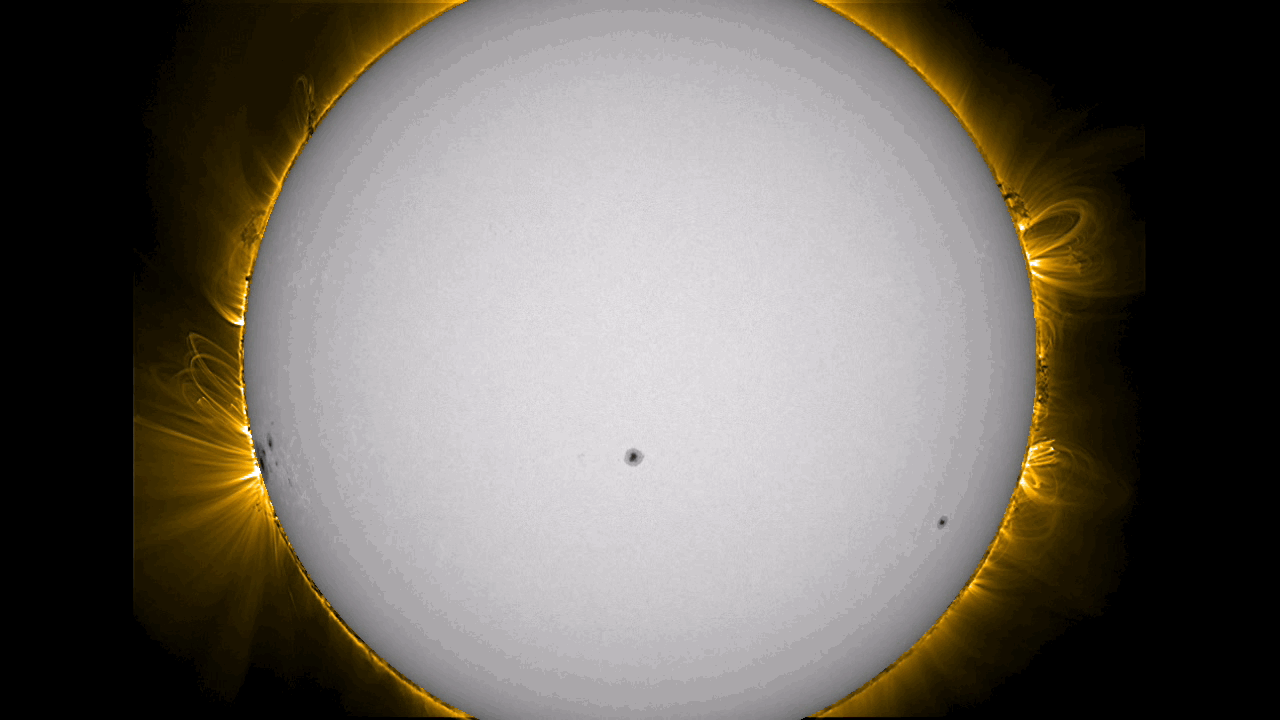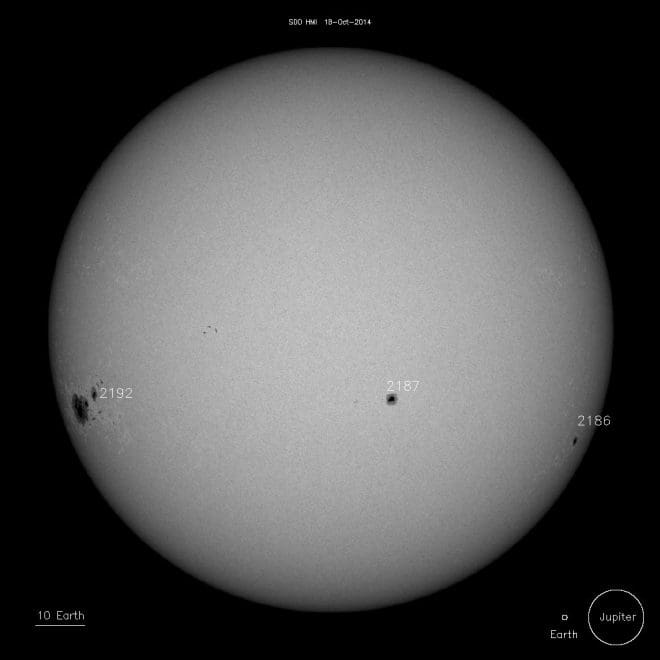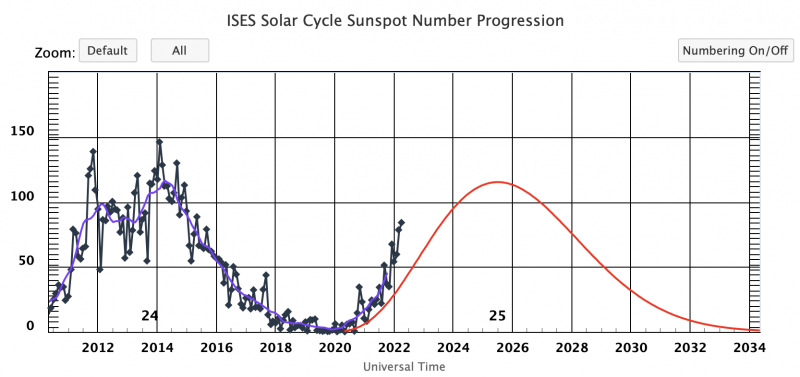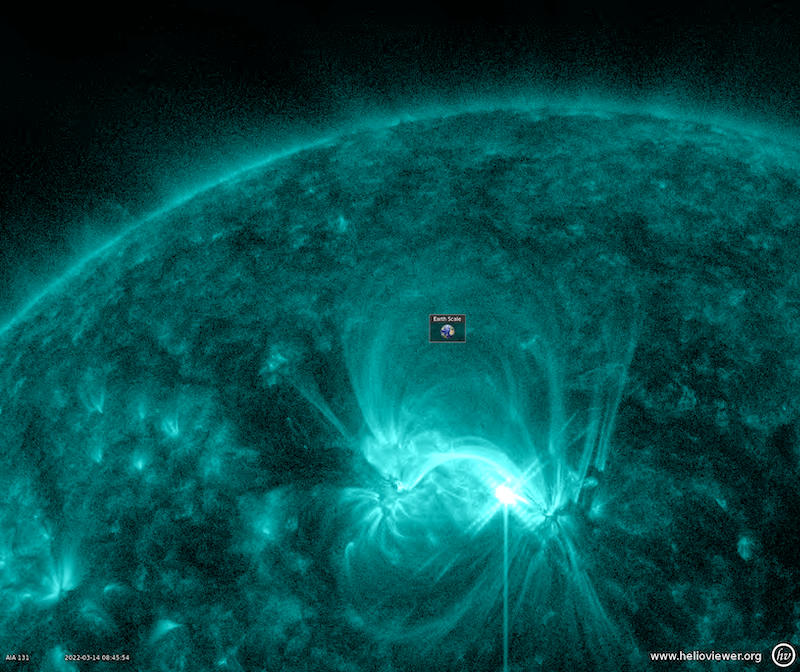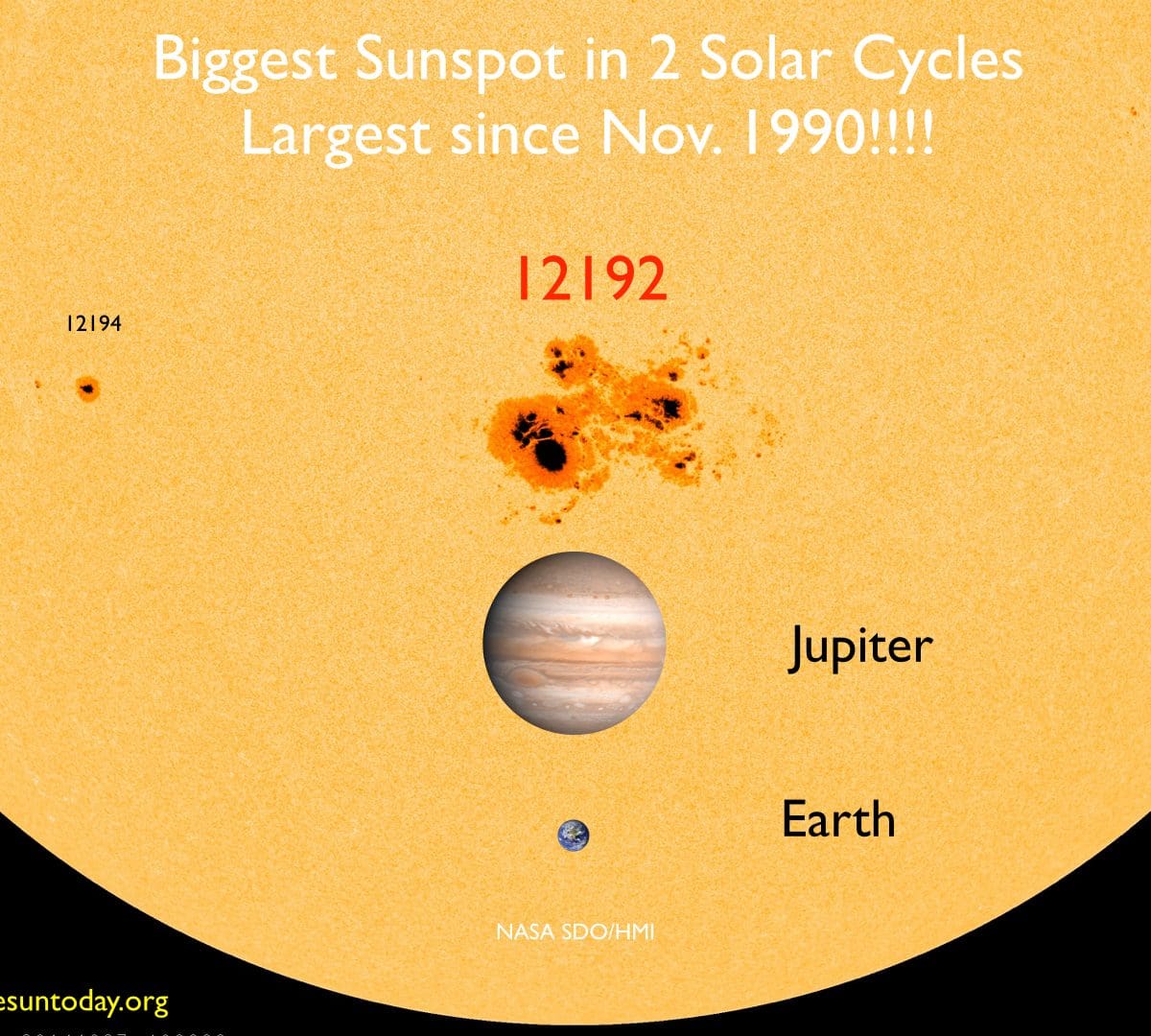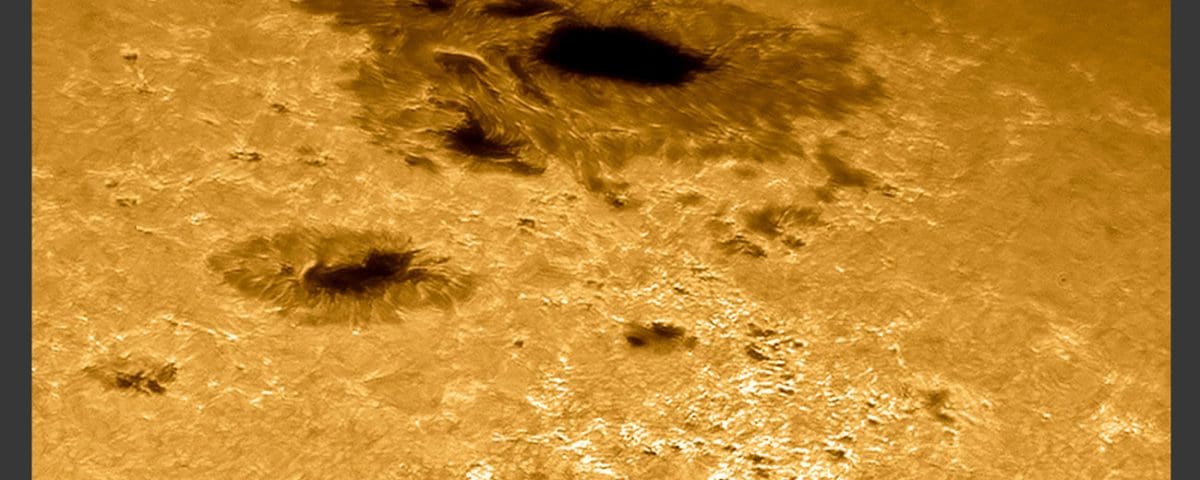
The active region on the southeast limb has now been designated as AR12192. This region has already produced several M and many C-class flares. Philippe Tosi of Nîmes, France, took this photograph of AR12192 on Oct. 18, 2014.

Philippe Tosi of Nîmes, France, took this photograph of AR12192 on Oct. 18, 2014 credit: Philippe Tosi shared at spaceweather.com
The animated gif below shows the region rotating onto the disk as observed by NASA’s SDO spacecraft. The image at the center is a visible light image from the HMI instrument. The images are overtop of the AIA 171 angstrom wavelength channel. This makes a halo around the HMI images. The AIA images show 600,000 Kelvin plasma which traces out magnetic loops.
The image below is also from SDO/HMI. The 3 active regions, including AR12192, are labeled. The leading 1 is left off of the numbers. Circles at the bottom right show the relative sizes of Earth and Jupiter for a better sense of scale.
credit: NASA/SDO/Philippe Tosi/spaceweather.com


